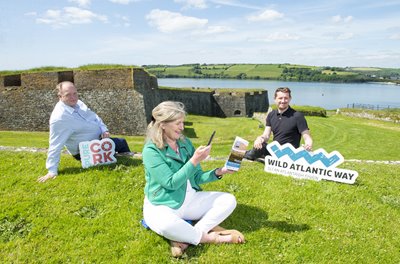

It seeks to promote the Irish language and support the Gaeltacht.


The Department is responsible for policy in the areas of conservation, protection, development and presentation of Ireland’s cultural and heritage assets. It brought together functions of the Department of Tourism, Culture and Sport, Environment, Heritage and Local Government and Department of Community, Equality and Gaeltacht affairs. The Department was re-established in June 2011 as part of the reorganization of the departments by the incoming government. The Department of Tourism, Culture and Sport was established in 2010. In 2002 the Department of Community, Rural and Gaeltacht affairs was established and subsisted until 2010. In 2002 the Department of Community, Equality and Gaeltacht affairs was established. In 2002 it became the Department of Arts, Sports and Tourism. In 1997 it became the Department of Arts, Heritage, the Gaeltacht and the Islands until 2002. The Department of Arts, Culture and the Gaeltacht was established in 1993. The Department of Tourism, Sport and Recreation was established in 1997 and continued until 2002. The Department of Tourism, Fisheries and Forestry established in 1986 and continued until 1987. The Department of Tourism and Trade was established in 1993 and continued until 1997. The floor-to-ceiling height was “phenomenally low” and this was one of the reasons it wasn’t possible to retain the building, Mr Reddy said.The Department of the Gaeltacht was established in 1956 and it continued until 1993. Tony Reddy, the architect of the proposed replacement building, said the existing building was a "very poor" piece of urban infill architecture, had a "very harsh" relationship with Baggot Street, and "ignored the line" of the Grand Canal. This was “grossly deficient”, Mr O’Toole said. Only three buildings since 1945, not including the Bord Fáilte building, had been added to Dublin City Council’s Record of Protected Structures. Shane O’Toole, architectural critic, historian and co-founder of DoCoMoMo Ireland, said the demolition of the building would represent an “irreplaceable heritage loss”. “We have very few buildings of that period that have retained their architectural integrity.” It is still in excellent condition externally but needs to be rescued internally,” he said. “It is a landmark building which is part of our 20th-century architectural heritage. Despite several years of vacancy, it was in good structural condition and should be renovated as its “demolition was irreconcilable with sustainable development”, Mr Walker said.


 0 kommentar(er)
0 kommentar(er)
